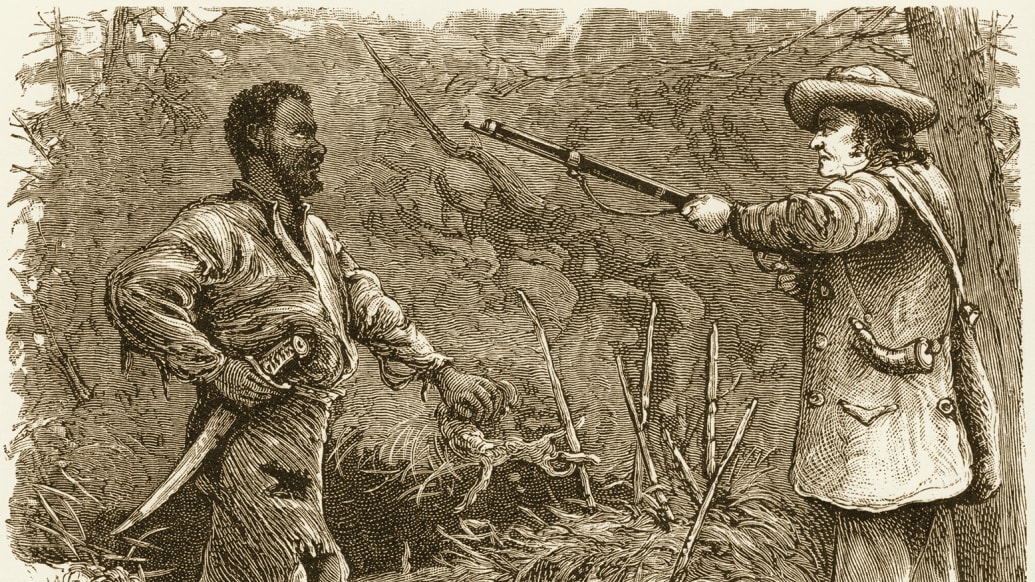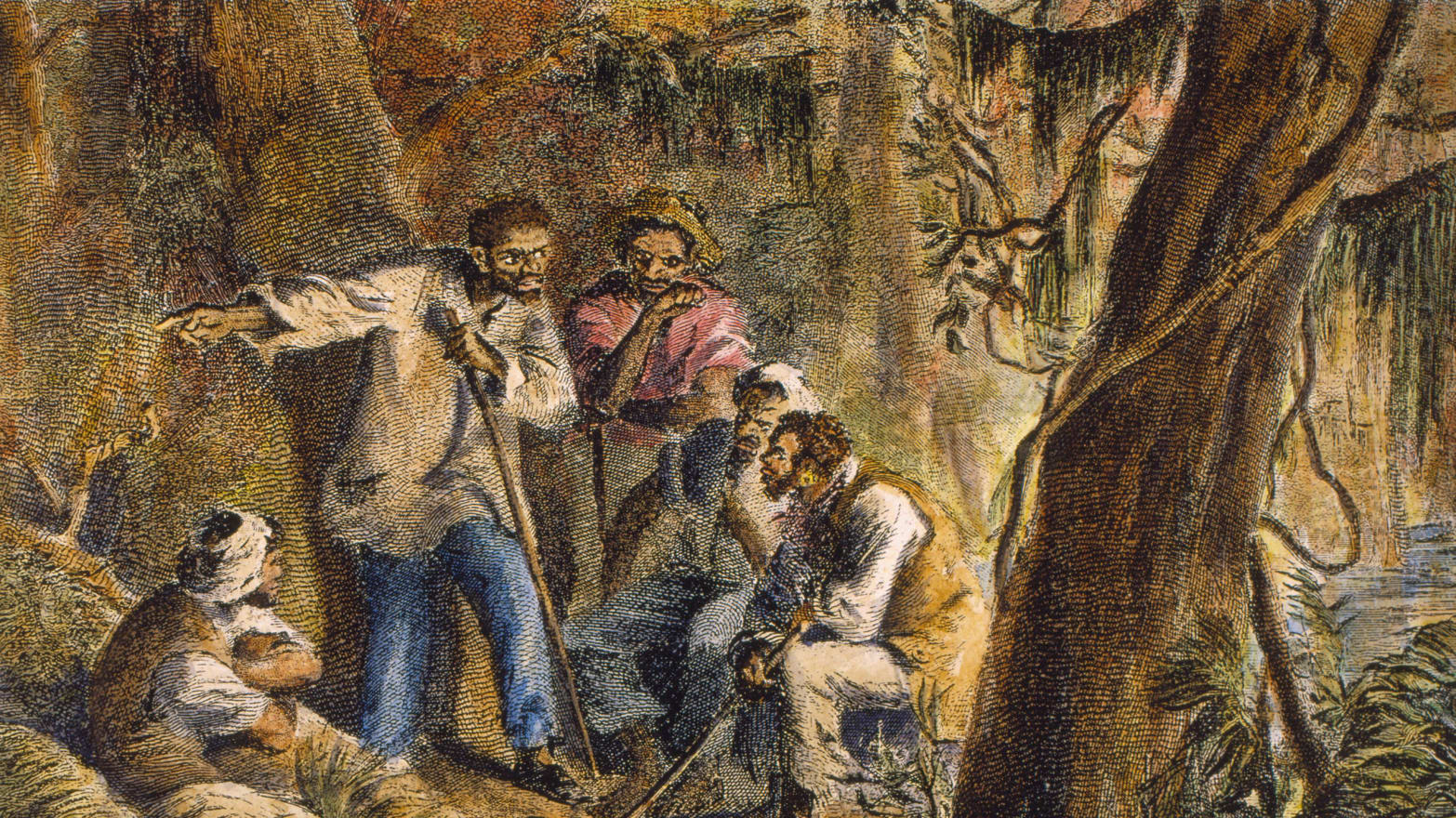Nate Parker entered his film The Birth of a Nation at this year’s Sundance Film Festival with little publicity and no distribution deal. It emerged having garnered the festival’s Grand Jury Prize, Audience Award, and a deal with Fox Searchlight for $17.5 million—the largest deal in Sundance history. Parker both directed and plays the central role of Nat Turner, who planned and carried out the most violent slave insurrection in American history in Virginia in 1831 that left 55 white men, women, and children dead. Allegations of rape involving Parker that date to his time as a student at Penn State, however, threaten to derail the movie’s recent premiere and its impact on how the public understands this particular event and the broader history of American slavery.
The controversy surrounding Parker’s past has obscured a far more interesting story currently playing out in Southampton County, where for the first time efforts are underway to interpret the 1831 slave rebellion for the general public. It is a promising development that comes amidst reports of police brutality within the black community, an active Black Lives Matter campaign, and a presidential election that has bitterly divided the nation along racial lines on the eve of the conclusion of our nation’s first black presidency. It also points to an increased willingness on the part of museums, historic sites, and even Hollywood to confront the violence of America’s slave past, but it is not without controversy.
It is difficult to exaggerate the challenges involved in interpreting Nat Turner’s controversial life in the place where so much blood was shed. This history remains contested ground for the black and white residents of Jerusalem (now Courtland) and the surrounding county. Local debates about how to interpret and remember Nat Turner point to tightly embraced competing memories of the past that fall along racial lines and more specific disagreements about what kinds of historical sources ought to be given priority, and who has the right to tell these stories.
Such differences stretch all the way back to the event itself and its aftermath, which included the execution of free and enslaved blacks by a community that feared additional violence, the eventual capture of Turner, his trial, and subsequent execution.
Efforts to interpret Turner and his slave rebellion began in 2002, when the Southampton County Historical Society (SCHS) gained possession of the Vaughan House—the only extant building dating back to the 1831 insurrection. Rebecca Vaughan, along with her two sons, niece, and overseer, were killed by Turner’s followers. Once restored, the home will serve as the centerpiece of an exhibit that explores the violent deaths of its occupants as well as the story of slavery in the community and the events that led up to and followed the bloody uprising. Its centerpiece will be the sword that Turner used throughout much of the rebellion.
Much of the history will eventually be shared through roughly 40 wayside markers at 17 stops throughout the county that will be accessible by foot and by car. Early drafts of individual markers reveal a clear commitment to deal with the horrors of chattel slavery in Southampton County as well as its connection to broader events. Visitors will be able to read about obscure slave rebellions such as The Plant Cutter Revolt of 1663, George Boxley Rebellion in 1811, as well as better known moments such as Denmark Vesey’s Revolt in 1822 and Gabriel’s Rebellion of 1800.

Turner’s story is told alongside other notable local African Americans, including Dred Scott, whose unsuccessful legal plea for his freedom was decided by the Supreme Court just a few years before the start of the Civil War. John Brown—not to be confused with the famous abolitionist—escaped slavery and eventually made his way to Great Britain, where he published his autobiography with the help of The British and Foreign Anti-Slavery Society. Finally, Anthony Gardiner traveled to Liberia with the help of the American Colonization Society and eventually became that nation’s ninth president. By highlighting the lives of these men, the SCHS hopes to frame the broader narrative around the quest for freedom and civil rights.
Any attempt to interpret a story like this for the general public, however, raises difficult questions of interpretation. Is it possible to tell a story that transcends racial divisions? How do you interpret the killing of women and children—a subject that even Nate Parker, who characterizes Turner as a hero, chose to avoid almost entirely in his movie? Most importantly, how should we understand Turner’s actions? Was he a freedom fighter, a murderer, or something else entirely? In short, what is his legacy?
These questions matter to Rick Francis, who is the Southampton County Circuit Court Clerk and belongs to the SCHS. Francis was born and raised in Southampton County and is descended from Nat Turner’s owner. From a very early age, he absorbed and re-told stories passed down by his father and others about members of his extended family, who ended up “on the business end of his ax” as well as others who were aided by local slaves and managed to survive.
While Francis fully supports the efforts of the SCHS to interpret Nat Turner’s rebellion, including its emphasis on white supremacy and the violence of slavery, he betrays a certain uneasiness when asked to evaluate Turner himself and the legacy of his actions. In a recent interview with 60 Minutes, Francis questioned whether emancipation is what motivated Turner and said that whether or not he was a freedom fighter “is not my call to make.”
Francis believes that it is possible for the SCHS—an organization that he admits is overwhelmingly white—to tell an “objective” history of Nat Turner through electronic maps, video, a driver app, artifacts, and primary sources such as The Confessions of Nat Turner penned by white Southampton lawyer Thomas Gray. Gray’s interview with Turner while in his jail cell during his trial was published shortly after his execution. It is an indispensible source for historians, but it remains a challenge to interpret. Francis’s goal from the beginning remains for the public interpretation to stay as far away from the “saint or sinner debate” and “let people come up with their own interpretation.”
But for H. Khalif Khalifah, this is neither satisfactory nor does it allay concerns that the story of Turner itself is being told by the wrong people. Born in Gosport, Alabama, and raised in New York City, Khalifah was introduced to Turner’s history during the height of the civil rights movement through publications distributed by radical black political organizations that referenced the slave as one among many “revolutionaries and militants who had waged a physical fight to Free Black People.” Trained as a master printer, Khalifah eventually started his own company that marketed books about black history to black communities.
In the mid ’80s, Khalifah and his wife moved to Southampton County, Virginia, on 123 acres of the “birth land” of Nat Turner, where he established the Nat Turner Library and Nat Turner Trail tours. He has had very little contact with the SCHS and is not involved in the organization of the new exhibits and trail tour. This distance reflects a deep skepticism that a largely white organization can accurately engage the general public about Turner’s story and the history of slavery.
Khalifah’s tours are geared specifically to African-American tourists and he rarely allows white visitors to join. When asked why, he suggested that “the pain that was visited upon black people is so brutal that emotions may become aroused against white people on the tour.” The language used along the tour adds to his concerns about how whites might respond. Stops along the tour are referred to as “battle sites,” while Turner and his men are referred to as the “Black Liberation Army of 1831.”
In contrast with Francis and the SCHS, he gives priority to black voices in building his interpretation and remains skeptical of the ability of white writers to write accurately about Turner and slavery. For example, Khalifah describes William Styron’s 1967 Pulitzer Prize-winning novel, The Confessions of Nat Turner as a “fabrication” and a “distortion of settled facts about Nat Turner.”
While Khalifah stresses the importance of providing his visitors with as much accurate historical information as possible, his larger goal is to “awaken” his black guests “to the state of the race” and the importance of acknowledging those individuals who understood and fought against white supremacy. At times the boundary between past and present collapses completely. According to Khalifah, Turner was a “community organizer.” He along with Barack Obama, Malcolm X, Dr. Martin Luther King Jr., Huey Newton, and Kwame Ture, among others, all “had the same choice to make.” For Turner, however, “there was only one choice,” which Khalifah maintains with the utmost conviction was “the right decision.”
Francis and Khalifah have had very little contact with one another over the years. It is a divide that is reinforced as much by their preferred narratives of Turner and slavery as it is by their very different personal backgrounds as well as their likely understanding of the history and current state of race relations in this country. At the same time, their respective narratives now peacefully co-exist on a landscape, which once witnessed the worst of America’s violent racial past. It is entirely possible that increased visitation and exposure to both perspectives may reveal places where the two narratives overlap and the possibility of collaboration and mutual understanding. For now, it is enough that these stories are being shared.
Kevin M. Levin is a historian and educator based in Boston. He is the author of Remembering the Battle of the Crater: War as Murder (2012) and is currently at work on Searching For Black Confederate Soldiers: The Civil War’s Most Persistent Myth for the University of North Carolina Press. You can find him online at Civil War Memory and Twitter @kevinlevin.
